What is the best time of day to take your blood pressure?
Hello, I'm Dr. Knowles Blue.
Many people have measured blood pressure in their lives, and for patients with high blood pressure, blood pressure measurement is even more commonplace, so what is the best and most accurate time to measure blood pressure? Objectively speaking, at any point in time, as long as you use the correct measurement method and accurate measurement tools, the measurement of blood pressure is accurate. However, for different groups of people, the time point for blood pressure measurement is also different. So let's find out the pattern of blood pressure fluctuation in normal people? What time to measure blood pressure for daily physical examination? How should I measure my blood pressure if I suspect hypertension? What time to measure blood pressure for hypertensive patients?
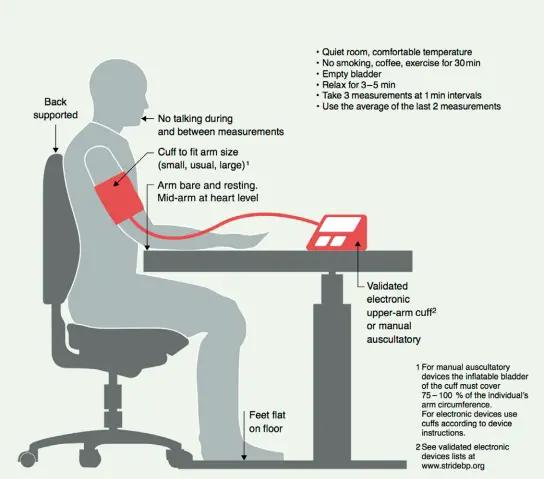
What is the pattern of blood pressure fluctuations when you measure your blood pressure several times a day?
Many people in life have this experience, in the day inside many times to measure the blood pressure, may be different every time, for example, 124/72mmhg in the morning, 116/70mmhg in the afternoon, 118/72mmhg in the evening, these figures on the surface does not seem to have any regularity, in fact, the human body's blood pressure in the 24 hours of the day inside a certain fluctuation pattern.
- Two peaks.: Blood pressure in a normal person usually appears to be relatively high during the day and relatively low at night, and in theThe two peaks are 6:00~8:00 in the morning and 16:00~18:00 in the afternoon., which means that blood pressure is higher when measured at these two times.
- trough: The body's blood pressure has a tendency to decrease gradually after nightfall.It reaches a relative low at 2 or 3 in the morning.This is the trough of the wave.
- spoon-shaped blood pressure: The 24-hour blood pressure of the human body is drawn on a graph paper as a waveform of blood pressure that is high during the day and low at night.A spoon like pattern, hence the name spoon blood pressure fluctuations.. If some patients' blood pressure appears to fall insignificantly at night or rise instead, then it is called non-scooped blood pressure or anti-scooped blood pressure.
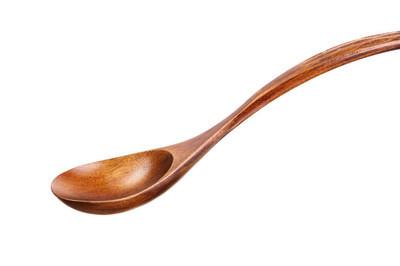
What point in time should I measure my blood pressure for a daily physical examination to most accurately reflect my blood pressure status?
- Daily medical checkups, whether you go to a medical facility or take your own blood pressure at home.It's always best to take your blood pressure during the day, because blood pressure is relatively high during the day.
- In addition to the point in time of measurement, it is more important to pay attention to the way of measurementYou should rest quietly for at least 5 minutes before measurement, do not drink strong tea or coffee, do not talk during measurement, pay attention to the position of the arm, the tightness of the cuff, the position of the cuff and so on. You can measure the blood pressure of both upper arms, compare which side is higher, and take the side with the higher blood pressure as the standard.
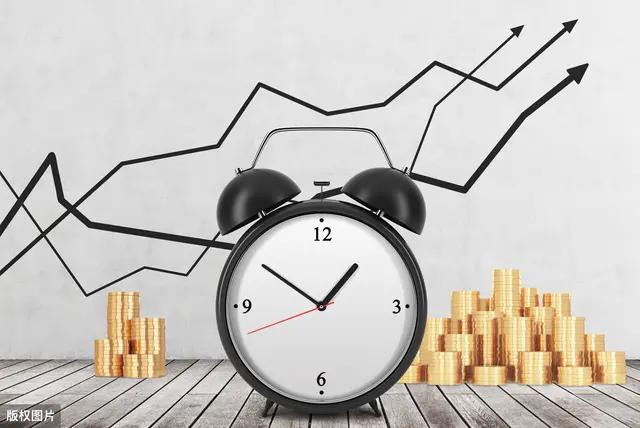
What measurements should be taken to make a definitive diagnosis of hypertension, which is suspected to be elevated when measured once in a while?
- Self-measurement:If you find that your blood pressure is elevated once in a while when you take a blood pressure measurement, then you should assess your blood pressure status by taking multiple measurements.You can usually choose to measure twice in the morning, twice in the afternoon, and twice in the evening.In the morning, after waking up and emptying urine, you can not wash and eat first, measure blood pressure twice and record it, to record the systolic and diastolic blood pressure, and record how many beats per minute the heart rate is; in the afternoon to measure blood pressure is preferably at 16:00 ~ 18:00, because this is another peak of blood pressure during the day; in the evening to measure blood pressure, you can before going to bed.
- 24-hour ambulatory blood pressure monitoring: Some people have normal blood pressure measurements at home and elevated blood pressure measurements at the hospital, or elevated blood pressure measurements at home and normal blood pressure measurements inside the hospital, which are called white coat hypertension and occult hypertension, respectively.A 24-hour ambulatory blood pressure monitor should be recommended for this condition if available.It is capable of measuring blood pressure many times over a 24-hour period, including during sleep.
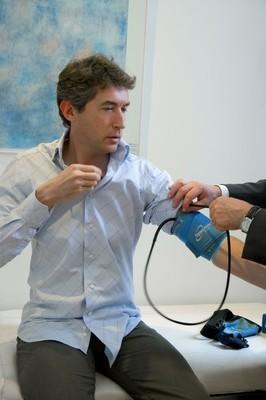
Is it okay for a person with high blood pressure to have daily medication and not have their blood pressure measured?
- Blood pressure stabilized:There is no need to measure blood pressure every day in patients who have undergone pharmacological and non-pharmacological treatment and whose blood pressure is in a relatively stable state.Generally speaking, it is sufficient to choose 1~2 days a week for blood pressure measurement.. It's also a good idea to measure your blood pressure in the morning and at night during that day or two.
- Unstable blood pressure: For patients whose blood pressure remains unstable or substandard, theYou should insist that your blood pressure be measured every day, morning and evening.If possible, you should also measure your blood pressure at 16:00~18:00 in the afternoon for 7 consecutive days and record it truthfully, so that you can bring this blood pressure record sheet with you when you go to the next appointment so that your doctor can adjust your medication.
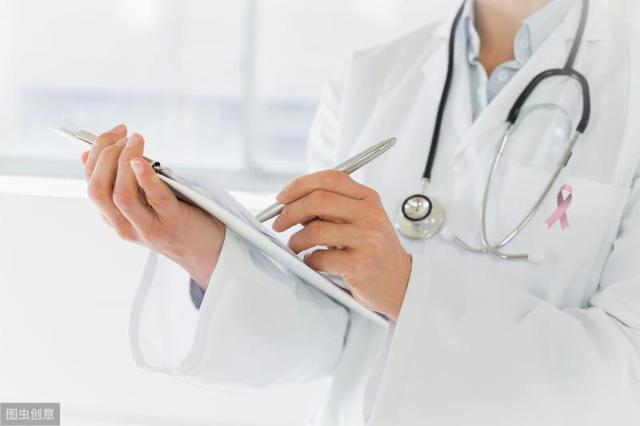
To summarize, the human body's blood pressure is constantly fluctuating, if you find yourself measuring your blood pressure differently many times, don't panic. The human body's high blood pressure during the day is to adapt to the needs of human activities during the day, and the blood pressure does not need to be high when resting at night, which is called having tension and relaxation. Daily physical examination, suspected high blood pressure, hypertension patients, blood pressure measurement time point and number of times are not the same. And it is important to pay attention to the way of measurement as well as the use of accurate sphygmomanometer.
Follow Dr. Know Your Heart Blue to learn more about the heart。
This depends on the purpose of measuring blood pressure. If you want to see if your blood pressure is normal, then you can measure it any time of the day; if you are a patient who has been diagnosed with hypertension and is self-monitoring your blood pressure, you can choose to measure your blood pressure once in the morning and once in the evening.
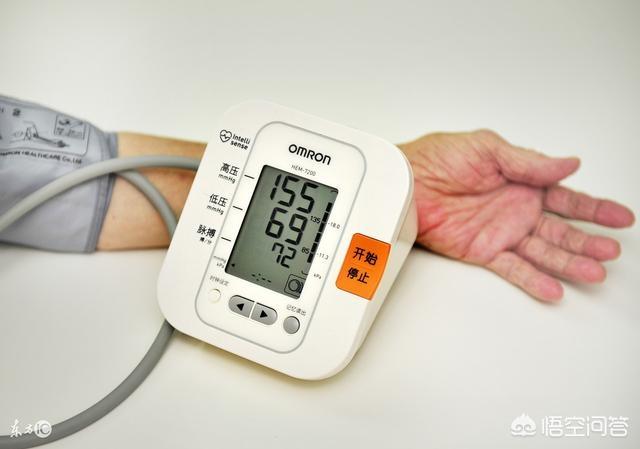
The prevalence of the disease increases gradually with age, and some patients have an insidious onset and slow progression of the disease. If you are suspected of having high blood pressure or want to measure your blood pressure in the hospital because of dizziness, headache, vertigo, etc., you can measure your blood pressure at any time of the day. Human blood pressure has a normal fluctuation process within a day, most people's blood pressure 6:00~9:00 in the morning the human body's blood pressure will rise, the formation of the first peak, and then began to decline to 4:00~6:00 p.m. to form the second peak, to the late night 0~2:00 blood pressure is the lowest, for the trough, and then the blood pressure rises again. But no matter how the fluctuations, blood pressure is within the normal range of fluctuations, if more than 140/90mmHg, it is possible to suffer from hypertension, the need for four weeks non-same day and then re-tested twice, if they all meet the diagnostic criteria for high blood pressure, then diagnosed as hypertensive disease.
For patients who have been diagnosed with high blood pressure, self-monitoring of blood pressure should be chosen to be measured once a day in the morning and once in the evening. In the morning, go to the toilet to urinate after waking up, and then measure blood pressure before eating and taking medication. In the evening, blood pressure should be measured after dinner, after taking medication, and before going to bed. For hypertensive patients, should check the measurement of the four fixed "fixed time, fixed upper limb, fixed sphygmomanometer, fixed person" measurement value is meaningful.
For those with high blood pressure in the morning, it is recommended to retest the blood pressure after taking the medication. For unstable blood pressure fluctuations, it is recommended to perform 24-hour ambulatory blood pressure to understand the fluctuation of blood pressure. For blood pressure, do not be too nervous, repeated measurements are more likely to cause an increase in blood pressure.
Many friends with high blood pressure will ask the question: Dr. Wang, let us monitor blood pressure, so in the end what time to measure accurate ah?
In fact, as long as the sphygmomanometer is accurate and the measurement method is standardized, it is accurate to measure blood pressure at any time. It's just that each time represents a different point in time for blood pressure.
Because our blood pressure itself is a curve, not a straight line.
1. Our blood pressure will be different in every instant
What we call measured blood pressure is just a sample, a blood pressure representation, at different times and in different states.
Blood pressure measured at different times is meaningful. It allows us to understand the changes in blood pressure at different times and in different states.
2. Normal diurnal blood pressure fluctuations are somewhat regular.
In adults, there are "two peaks and one valley", i.e. two peaks and one valley, i.e. the first peak between 6:00 and 10:00, the second peak between 16:00 and 20:00, and the obvious valley between 0:00 and 4:00 at night.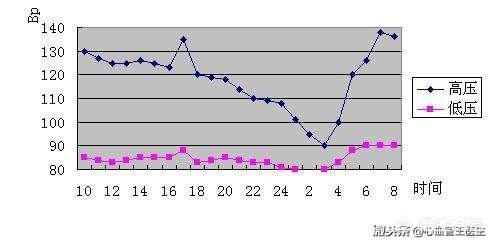
The blood pressure value measured throughout the day draws a curve like a long-handled spoon, medically known as "spoon blood pressure". The circadian blood pressure rhythm of the elderly in addition to the "two peaks and one valley", there is a trough at 12 to 14 o'clock in the middle of the day, compared with the adults more than a period of low blood pressure, presenting as "two peaks and two valleys" (two peaks and two valleys).
3. Early morning is when blood pressure tends to rise
There is a type of hypertension called "early morning hypertension". That is, within one hour after waking up in the early morning, before taking medication, before breakfast, home blood pressure measurement results or ambulatory blood pressure recordings of two hours after waking up or between 6:00 am and 10:00 am blood pressure reaches or exceeds the diagnostic criteria for hypertension. That is why home self-measurement of blood pressure generally involves monitoring blood pressure in the early morning.
4. Nocturnal hypertension
Poor sleep, apnea-sleep apnea syndrome, antihypertensive medications taken inappropriately and acting too short to control nighttime blood pressure, and so on.
5. Postprandial hypotension
If older adults experience postprandial dizziness, fatigue, sleepiness, drowsiness, or even fainting, it is important to monitor blood pressure after meals.
6. Postural hypotension
It's also mostly seen in older people, so come on people move slower when changing positions, especially when standing up.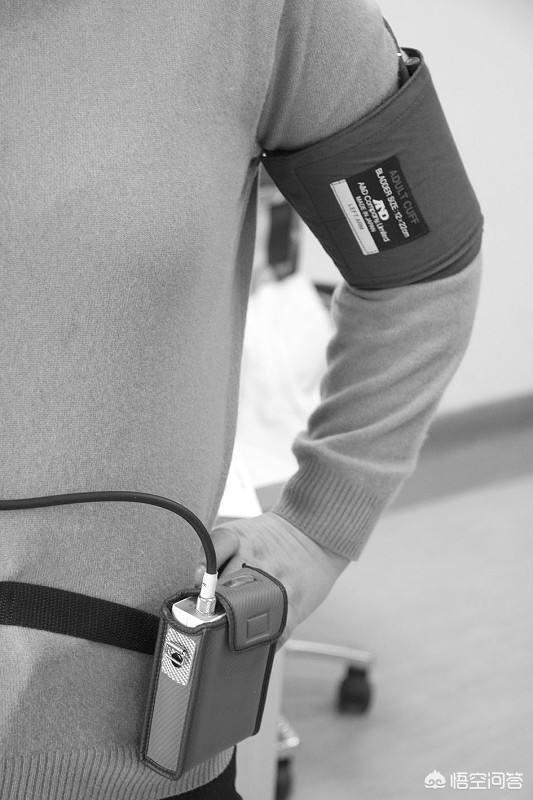
We want to know in more detail about our blood pressure level and fluctuation throughout the day, it is best to have ambulatory blood pressure monitoring, which allows us to know the blood pressure during those times when high blood pressure or low blood pressure occurs, to observe the changes in blood pressure, to observe the efficacy of the medication, and can provide a basis for the doctor to adjust the antihypertensive medication.
So, any time we measure our blood pressure is our own blood pressure, it just means different things at different times!
Humans have developed their own unique blood pressure profile over thousands of years of evolution, and it is safe to say that depending on the different times of the day when humans accomplish different tasks, their blood pressure will vary from high to low. These blood pressure variations are the result of our evolution over the millennia, and it is not the case that a higher blood pressure is bad and a particularly low blood pressure is necessarily good. Therefore, it is not possible to say that which time of the day is bad and which time of the day is particularly good, because no matter how high or low it is, it is a situation that is designed to meet the needs of our organism.
I. What does the human blood pressure curve look like?
Normal human dynamic blood pressure fluctuation curve was double peaks and valleys of the long-handled ladle shape, blood pressure in the morning 2:00 ~ 3:00 in the lowest valley, this time period is not those who want to ask when the blood pressure is the best friends are most concerned about, is not just want to ask the lowest blood pressure at this time. From the early morning after awakening blood pressure rises sharply and 6:00-10:00 peak, daytime basically at a relatively high level, the principle is because human beings need to labor during the day, so the daytime blood pressure needs to be higher. Most people have two peaks of blood pressure during the day (06:00-10:00 and 16:00-18:00), and after 18:00 blood pressure is slowly declining until the lowest in the early hours of the night.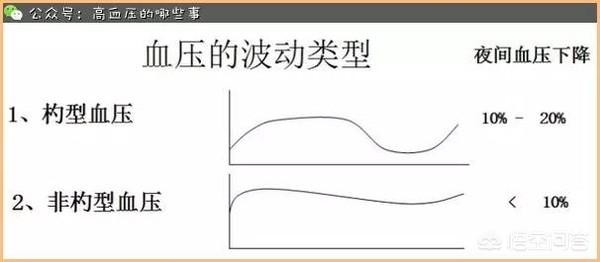
Second, which time period is most prone to cardiovascular disease?
High blood pressure for a long time without reasonable management will make the heart, brain, kidneys and other target organs undergo serious damage, serious cardiovascular and cerebrovascular events, such as cardiac infarction, cerebral infarction is also closely related to the rhythm of blood pressure, a large number of studies have shown that these cardiovascular and cerebrovascular disease events especially like to occur early in the morning (6-10 a.m.), and so early in the morning has become a veritable "high incidence of disease time! Therefore, early morning has become a real "time of high incidence of disease", the academic management of this period of elevated blood pressure is called early morning hypertension, early morning hypertension is also a high-risk factor for cardiovascular and cerebrovascular disease and should be particularly concerned about the problem.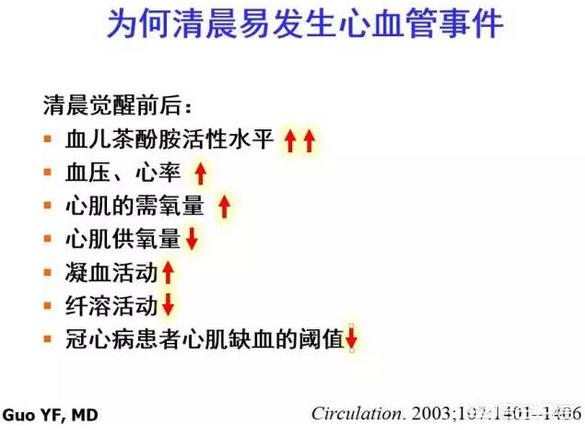
Therefore, Dr. Zhang especially pointed out that the majority of hypertensive patients in the control of blood pressure at the same time, but also pay special attention to the time point of blood pressure rise, control of blood pressure rise in the early morning is particularly important.
For more health information, please follow Dr. Zhang Zhiying's headline.
Normal human blood pressure is in a certain range of fluctuation, the level of blood pressure is not only related to theHeart function, vascular resistanceetc., are also subject toNervous, humoral and other factorsThe Effects. Exercise, mood changes can makeElevated blood pressure, rest, and sleep will makeDecreased blood pressure. Usually in the morning.9-10 pointsAfternoon4 points - 10 pointsThere will be a spike in blood pressure, and midnight1-3点There will be a low peak in blood pressure.
How do I measure my blood pressure correctly?
The body's blood pressure is in diurnal fluctuation, so blood pressure measured in the morning is closest to theBasal metabolic blood pressureIt is recommended that a fixed time of day be set.Blood pressure was taken while emotionally stable, resting quietly, and sitting.
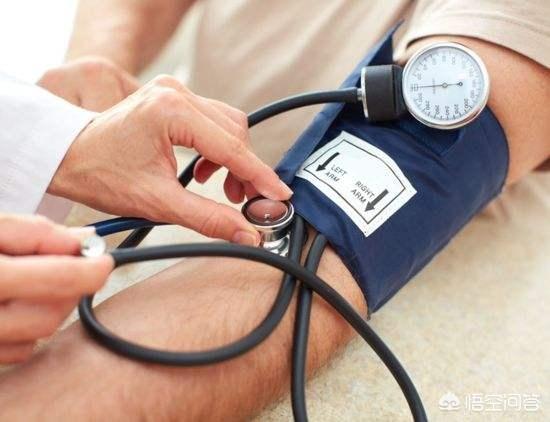
How is hypertension diagnosed?
Normal people have fluctuating blood pressure.Therefore, you cannot judge whether your blood pressure is elevated based on 1 or 2 blood pressure measurements alone, but you need to observe it over a period of time to further observe the changes and overall level of blood pressure.
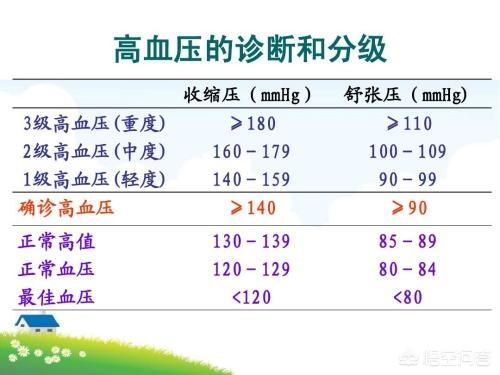
There are many types of blood pressure monitors available today, withMercury sphygmomanometer, home-type electronic sphygmomanometer, ambulatory blood pressure monitorAnd so on.
Diagnostic Criteria:
1. General requirementsMeasured three times on non-same day. Mercury sphygmomanometerBoth blood pressure values systolic ≥140mmhgand/or diastolic blood pressure both ≥90mmhgHypertension can be diagnosed.
2.Home electronic blood pressure monitorBoth blood pressure systolic ≥135 mmhgand/or diastolic blood pressure ≥85mmhgHypertension can be diagnosed.
3.24-hour dynamicMean systolic blood pressure on blood pressure monitors were ≥130 mmhgand/or mean diastolic blood pressure ≥80mmhgHypertension can be diagnosed.
How to prevent high blood pressure?
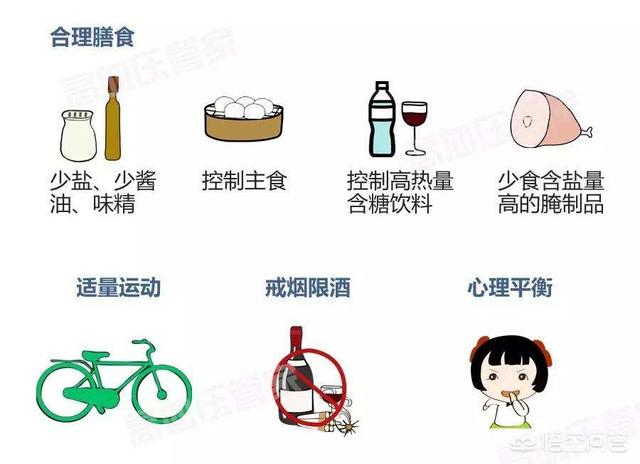
Daily popularization of health knowledge, God outside the Lancet - your side of the health gatekeeper. Thank you for your attention, likes and comments.
It is a known fact that human blood pressure is not actually steady, but fluctuates constantly over time. I'm sure both hypertensive and normal people are wondering when is the best and most accurate time of day to measure their blood pressure?
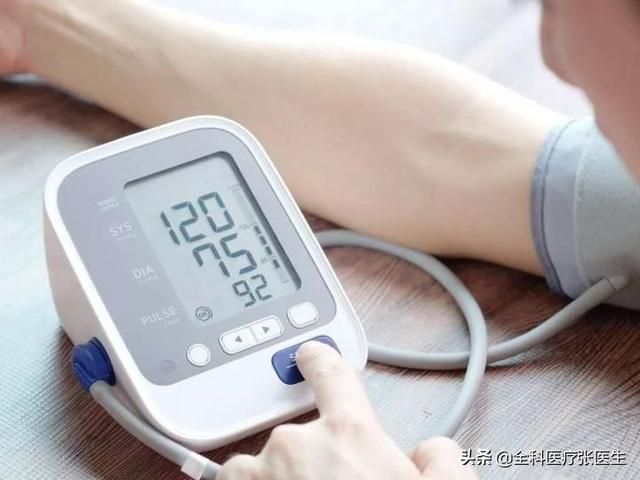
Let's start with "blood pressure."
Blood pressure (BP) is the lateral pressure acting on the wall of a unit area of blood vessel when blood flows within the vessel, and it is the driving force for the blood to flow within the vessel. It is called arterial BP, capillary BP and venous BP in different blood vessels, and is usually referred to as arterial BP in the body circulation. Its value is not fixed and can be affected by psychological and physiological changes.
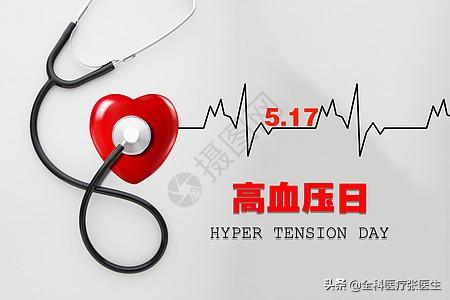
How does the body's blood pressure change?
As you should know, normal blood pressure values are 90 to 140 mmHg systolic and 60 to 90 mmHg diastolic, and as long as it is within this range it is the ideal blood pressure.
Normal blood pressure shows a clear diurnal fluctuation pattern, with blood pressure being lowest at night and rising rapidly in the morning after getting up and moving around. During the day, blood pressure is highest between 6 and 10 a.m. and between 4 and 8 p.m., and then slowly decreases to be lowest in the early hours of the night.
A person's blood pressure is also affected by psychological factors, mood changes, sleep, temperature and environmental climate. Blood pressure can also fluctuate in the presence of insomnia, alcohol consumption, and smoking, so if you have high blood pressure, it is recommended that measurements be taken more accurately in the morning and at the peak of blood pressure in the afternoon.
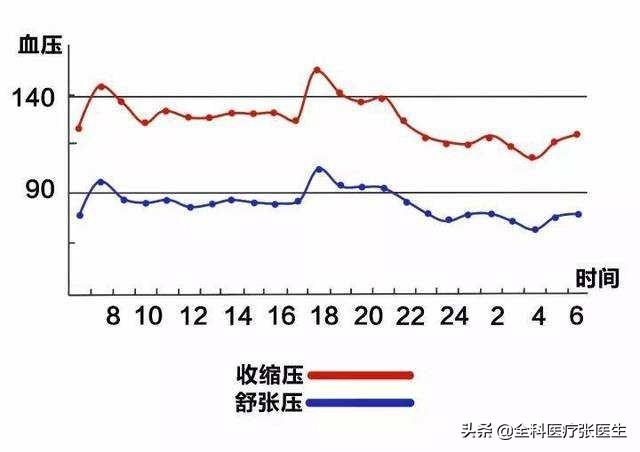
So when is the best time to take your blood pressure?
[Best Time]
①The best time to measure your blood pressure is within one hour of waking up in the morning or before going to bed at night. If measuring in the morning, do it within one hour of waking up, after urination, and before breakfast (or before taking antihypertensive medication if you are taking it). If measuring in the evening, it is recommended to do so before going to bed. At other times of the day, it is best to measure when your body and mood are in a stable state. It is also recommended that measurements be taken at the same time of day.
② Please take measurements at the same time each day so that the resulting data can be better compared.
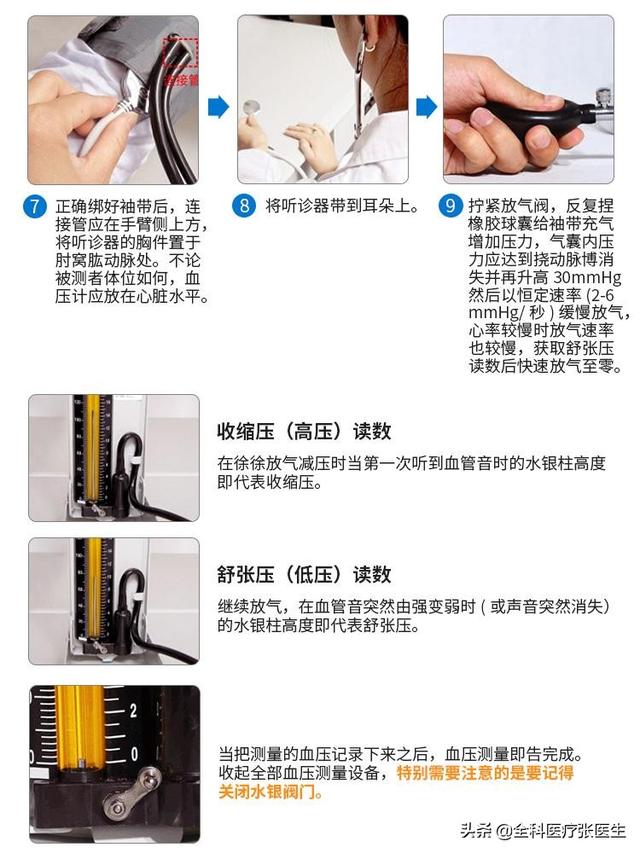
How do you measure blood pressure correctly?
Mercury sphygmomanometer:
(1) Before measurement, check whether the sphygmomanometer is normal, such as whether there is any leakage of mercury, whether there is any aging or leakage of the pressurized balloon and rubber tubing, and whether the plane of the mercury column is in the "0" position.
(2) Assist the patient to assume a lying or sitting position, exposing the arm on one side, with the elbow straight and the palm up. A small pillow may be placed under the arm to keep the arm at the same level as the heart.
(3) The sphygmomanometer is placed in the proper position and the sphygmomanometer "0" is at the same level as the arm and heart.
(4) Exhaust the air in the pulse-pressing band, and wrap it flatly and without folding in the middle of the upper arm, so that its lower edge is 2-3 cm from the elbow. the tension of the pulse-pressing band should be appropriate, and it is appropriate to allow the insertion of 1 finger.
(5) Switch on the sphygmomanometer. The tester wears a stethoscope and places the membrane surface of the stethoscope on the brachial artery in the crook of the patient's elbow with one hand, close to the skin, without adding pressure. The other hand holds the balloon to tighten the valve piston in a clockwise direction and close it, inflate the mercury column to rise to the brachial artery pulsation sound disappears and then add 20 to 30 mmHg.
(6) The tester keeps the eyes parallel to the mercury column and releases the ballooning piston in a counterclockwise direction to deflate slowly, so that the mercury column falls by 2 to 4 mmHg per second. Watch the scale pointed out by the mercury column, when you hear the first clear beating sound, the scale pointed out by the mercury column is the systolic blood pressure. Continue to deflate until the sound disappears or suddenly becomes weak, the scale indicated by the mercury column is the diastolic pressure.
(7) When measurement is completed, remove the pulse-pressure band, fully deflate the band, and fold the band and place it in the sphygmomanometer box. Turn off the switch and close the lid when the mercury is completely returned to the mercury tank.
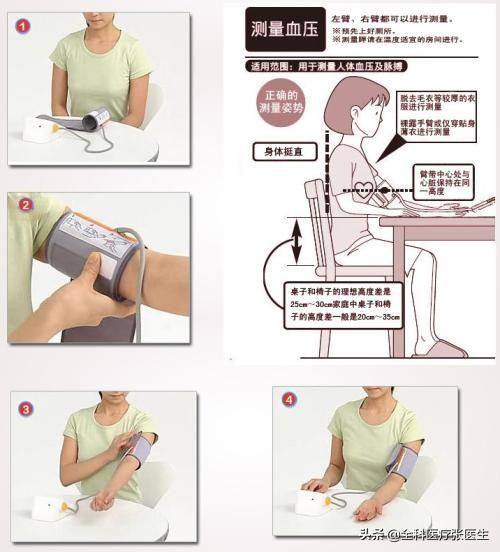
Electronic sphygmomanometer:
(1) Connect the meter and stethoscope socket and pressure hose to the correct position.
(2) Assist the patient to assume a lying or sitting position, exposing the arm on one side, with the elbow straight and the palm up. A small pillow may be placed under the arm to keep the arm at the same level as the heart.
(3) The sphygmomanometer is placed in the proper position and the sphygmomanometer "0" is at the same level as the arm and heart.
(4) The tester inflates and pressurizes the pressure band with his/her right hand to a pressure indicator of 140 mmHg for adults and 210 mmHg for hypertension. the meter switch is set to "ON", and the balloon is released to slowly decompress the pressure, with the mercury column dropping by 2 to 4 mmHg per second.
(5) Lights and "beeping" sound, the data displayed by the meter is systolic blood pressure; after that, the lights and "beeping" sound stop, and the weakest light and sound display data is diastolic blood pressure.
(6) After the measurement, the meter switch to "Off", the pressure pulse belt air completely discharged, organized and put back in place.
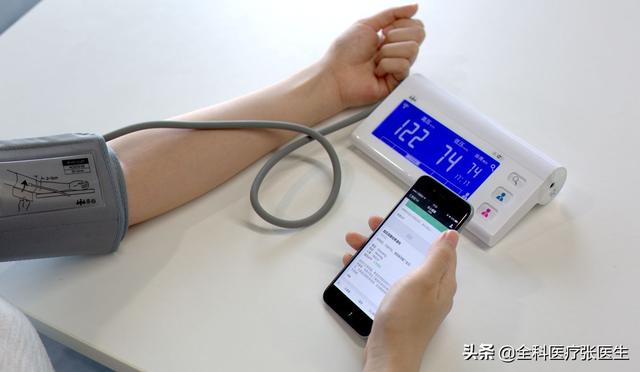
Caveats:
Measurements should be repeated 2 minutes apart and the average of the 2 readings recorded. If the difference between the systolic or diastolic readings of the 2 measurements is >5 mmHg, measurements should be repeated 2 minutes apart and the average of the 3 readings should be taken.
Final Summary: Blood pressure measurement is an important checkup item to determine the health of the body, which is a routine checkup. In the treatment of disease, especially major diseases, regular measurement of blood pressure is an important basis for the evaluation of treatment effect, so we must pay attention to the correct operation method in the daily measurement.
If hypertensive patients generally we recommend daily monitoring of blood pressure, the time to monitor blood pressure is usually in the morning after waking up on an empty stomach, measured after urination, if it is in the afternoon is usually between 16:00-18:00, which will be relatively accurate time point.
If a normal average person takes their blood pressure, it's also usually about the same time in the morning after they wake up, and in the afternoon, but it's recommended that it's all after inactivity.
If you have just finished exercising or walking, it is recommended that you sit and rest for 3 to 5 minutes before taking your blood pressure, which will be more accurate.
Monitoring blood pressure at any time is a good habit, but if the blood pressure is normally normal occasionally once or twice elevated we do not have to be too panicked, you can every two or three days and then measured, because elevated blood pressure receives the influence of many factors, and not necessarily high blood pressure is high blood pressure disease.
According to data from the 2017 China Heart Conference: hypertension in China amounted to243.5 million.Shocking statistic, isn't it!
What is even more shocking is that only 42.7% of the people know they have high blood pressure, which means that almost more than half of the people do not know they have high blood pressure! This shows how important it is to monitor your blood pressure in your daily life.
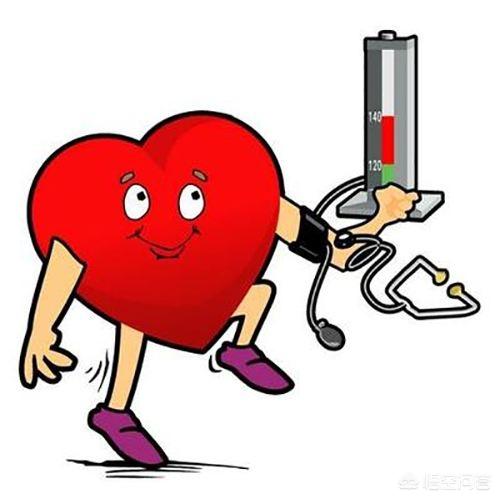 Back to the question of the subject, what is the best time of day to measure blood pressure? Actually, most people's blood pressure is in a"Day high, night low, two peaks and a valley."Rhythmic phenomenon of, if the blood pressure of 24 hours a day is recorded to form a curve, it will be found that the shape is like a spoon, so it is also known as "spoon-shaped blood pressure".
Back to the question of the subject, what is the best time of day to measure blood pressure? Actually, most people's blood pressure is in a"Day high, night low, two peaks and a valley."Rhythmic phenomenon of, if the blood pressure of 24 hours a day is recorded to form a curve, it will be found that the shape is like a spoon, so it is also known as "spoon-shaped blood pressure".
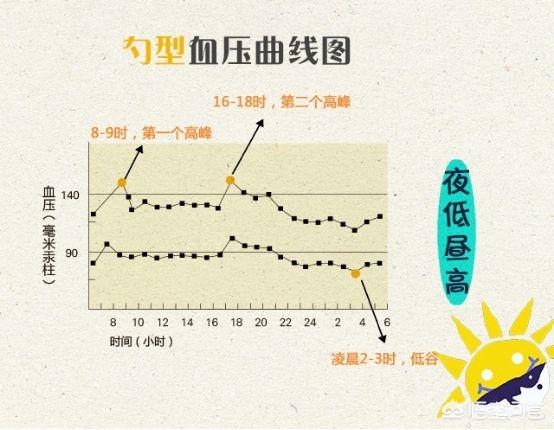 Ideally, if you can measure two peak blood pressure values and a lower blood pressure value at night, then you can get a full picture of your blood pressure, soMonitoring 3 times a dayIt's best. For patients with better blood pressure control.Monitoring one day a week is sufficient, for patients with suboptimal blood pressure nulls, it is necessary toAt least 3 days of continuous monitoring, preferably 7 daysthat helps to determine how well your blood pressure is controlled during this time. If you have too little time, it is better to monitor your blood pressure in the morning.
Ideally, if you can measure two peak blood pressure values and a lower blood pressure value at night, then you can get a full picture of your blood pressure, soMonitoring 3 times a dayIt's best. For patients with better blood pressure control.Monitoring one day a week is sufficient, for patients with suboptimal blood pressure nulls, it is necessary toAt least 3 days of continuous monitoring, preferably 7 daysthat helps to determine how well your blood pressure is controlled during this time. If you have too little time, it is better to monitor your blood pressure in the morning.
1.Morning blood pressure measurement: Measurement within 1 hour of waking up, before breakfast, before taking medication
2.Blood pressure measurement at night: before going to bed
3.Afternoon blood pressure measurement: in the afternoon4:00-6:00Measurement between
Having said that about the time to monitor blood pressure, by the way recounting theMethods of measuring blood pressure。
Before measuring blood pressure:Do not smoke, drink alcohol, coffee, tea, etc., do not engage in strenuous exercise, maintain a calm mood, and rest quietly for about 5 minutes, then choose a table and chair of appropriate height and a suitable sphygmomanometer for measurement.
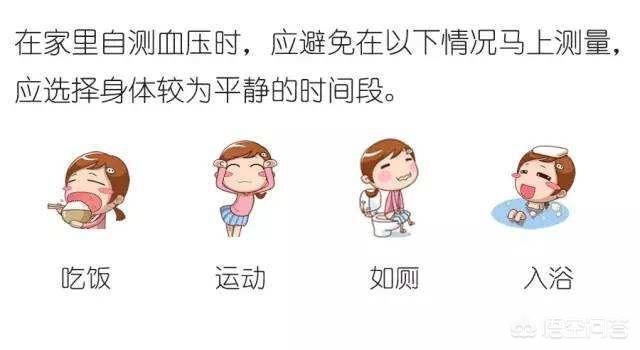 During the measurement, keep sitting position, bare upper arm, the lower edge of the cuff should be 2-3cm above the elbow socket when tying the cuff, and it is best to tuck in 2-3 fingers, do not talk, look at the cell phone and so on during the measurement. It is best to measure 2-3 times in a row and then take the average value.
During the measurement, keep sitting position, bare upper arm, the lower edge of the cuff should be 2-3cm above the elbow socket when tying the cuff, and it is best to tuck in 2-3 fingers, do not talk, look at the cell phone and so on during the measurement. It is best to measure 2-3 times in a row and then take the average value.
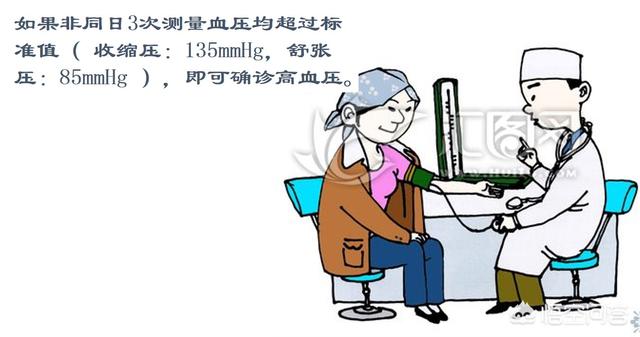
After reading this, do you know how to measure your blood pressure? If so, pleaseKudos.吧~
References:
1. Park S, et al. Expert panel consensus recommendations for home blood pressure monitoring in Asia: the Hope Asia Network. J Hum Hypertens. 2018 Jan 31. doi: 10.1038/s41371-017-0025-y. [Epub ahead of print]
2. Wang W, Zhang WZ, Sun NL, et al. Guidelines for blood pressure measurement in China[J]. Chinese Journal of Hypertension, 2011, 6(12):1101-1115.
(Above image from the web)
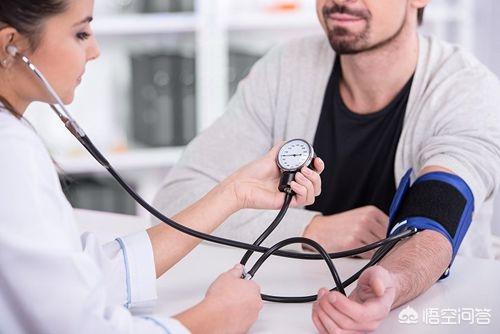 This is a very good question and a point of knowledge that all people with hypertension should be aware of, not only for better control of blood pressure, but also for effective prevention of organ damage caused by hypertension.
This is a very good question and a point of knowledge that all people with hypertension should be aware of, not only for better control of blood pressure, but also for effective prevention of organ damage caused by hypertension.
Hypertensive patients on the control of blood pressure refers to the control of blood pressure at any time throughout the day, but human blood pressure throughout the day and has a certain pattern of change, the highest point and the most likely to cause organ damage to the control of blood pressure, blood pressure throughout the day, the overall level of blood pressure that would be effectively controlled, so first of all, we need to be good to understand the blood pressure in the 24-hour period is how to change.
Human blood pressure at 6:00 a.m. will appear a peak, this peak lasts about 3-4 hours, and for the whole day's highest peak, and then began to decline, to the evening 5-7:00 p.m. will again appear a peak, but lower than the peak in the morning, and then began to decline, to the middle of the night to the lowest valley, the whole day the highest peak and the lowest valley of the blood pressure difference of about 20%.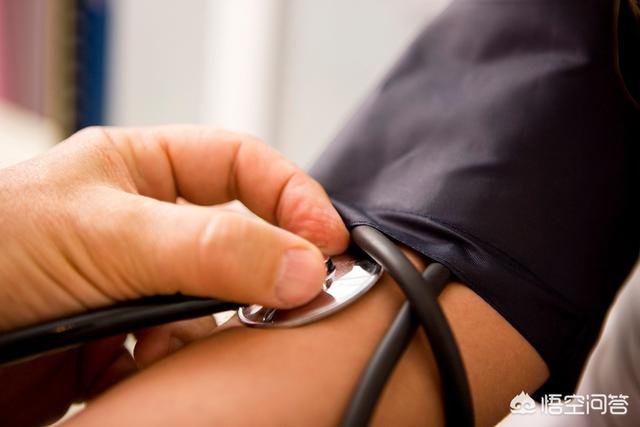
Based on this pattern of change, people with high blood pressure know which times make the most sense to measure their blood pressure:
Early morning blood pressure, i.e. 6:00-10:00 a.m., represents the highest value of blood pressure in the whole day, therefore it is the time when hypertensive patients are most prone to cardiovascular and cerebral vascular accidents, and it is also the most important time for blood pressure control, and it is the time when hypertensive patients should have their blood pressure measured on a regular basis and it is good to take antihypertensive medication after having had their blood pressure measured.
Evening Blood Pressure That is, the blood pressure in the evening from 5-7 p.m. Measuring blood pressure at this time helps to understand the downward trend of blood pressure levels throughout the day, which is very helpful in determining the effectiveness of antihypertensive medications in lowering blood pressure.
Nocturnal Blood Pressure This is a time of day that is overlooked by most patients, i.e., blood pressure between 1-3pm at night. Several studies have confirmed that a blood pressure higher than 120/80 mmHg at this time of day is the single most dangerous factor for organ damage, and is independent of early morning hypertension and a major cause of early morning blood pressure elevation.
Therefore, for hypertensive patients, blood pressure should be monitored at all three points. In practice, it is easier to measure blood pressure in the early morning and in the evening, while blood pressure in the middle of the night is inconvenient to measure, and the state of waking up in the middle of the night will have an effect on the actual blood pressure and cannot accurately respond to the level of blood pressure, so it is recommended that 24-hour ambulatory blood pressure monitoring be used regularly to detect.
【I hope this answer can help you, welcome to click on the attention and leave a message, together to learn and exchange more health knowledge!】
Tap the upper right corner"Concerned."The first step is to make it easier for you to learn about medicine.
I. Look at the chart below to grasp the 24-hour human blood pressure fluctuation pattern.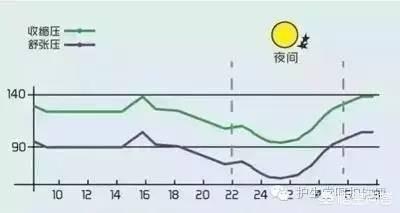
Human blood pressure generally has two peak periods during the day (for most people, not absolutely), that is, 6 to 10 a.m. and 4 to 8 p.m. Outside of these two time periods even hypertensive patients, blood pressure will be reduced to a certain extent, so it is necessary to monitor the blood pressure in these two time periods, to grasp the high value of the really high blood pressure.
Second, look at the chart below to grasp how to determine high blood pressure.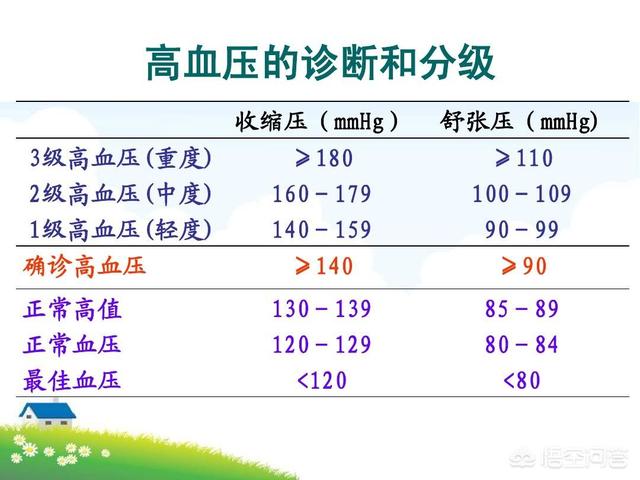
① It is clearly stated in the Chinese Guidelines for the Primary Management of Hypertension that hypertension is diagnosed when the systolic blood pressure is ≥140 mmHg and/or the diastolic blood pressure is ≥90 mmHg when measured three times on non-same days without the use of antihypertensive drugs. Patients with a previous history of hypertension and currently taking antihypertensive medication should be diagnosed with hypertension even though their blood pressure is less than 140/90 mmHg.
② At present, clinic blood pressure is still used as the basis for hypertension diagnosis. Conditions should be actively used at the same time home blood pressure or dynamic blood pressure diagnosis of hypertension, home blood pressure ≥ 135/85 mmHg; dynamic blood pressure during the day ≥ 135/85 mmHg, or 24h average value of ≥ 130/80 mmHg for the threshold for the diagnosis of hypertension.
Third, look at the following chart to master the correct blood pressure measurement.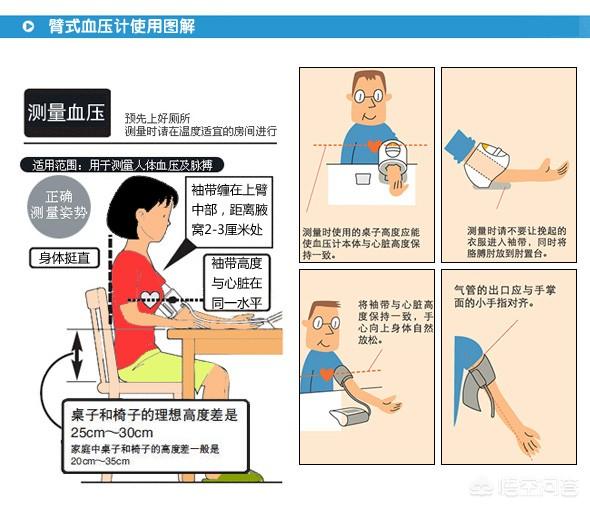
It is recommended to measure blood pressure once a day in the morning and in the evening, 2-3 times each time, with a 1-minute interval, and take its average value, to grasp the real level of blood pressure in a more scientific way.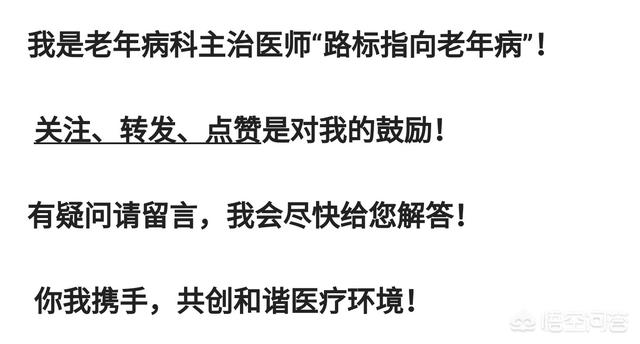
This question and answer are from the site users, does not represent the position of the site, such as infringement, please contact the administrator to delete.